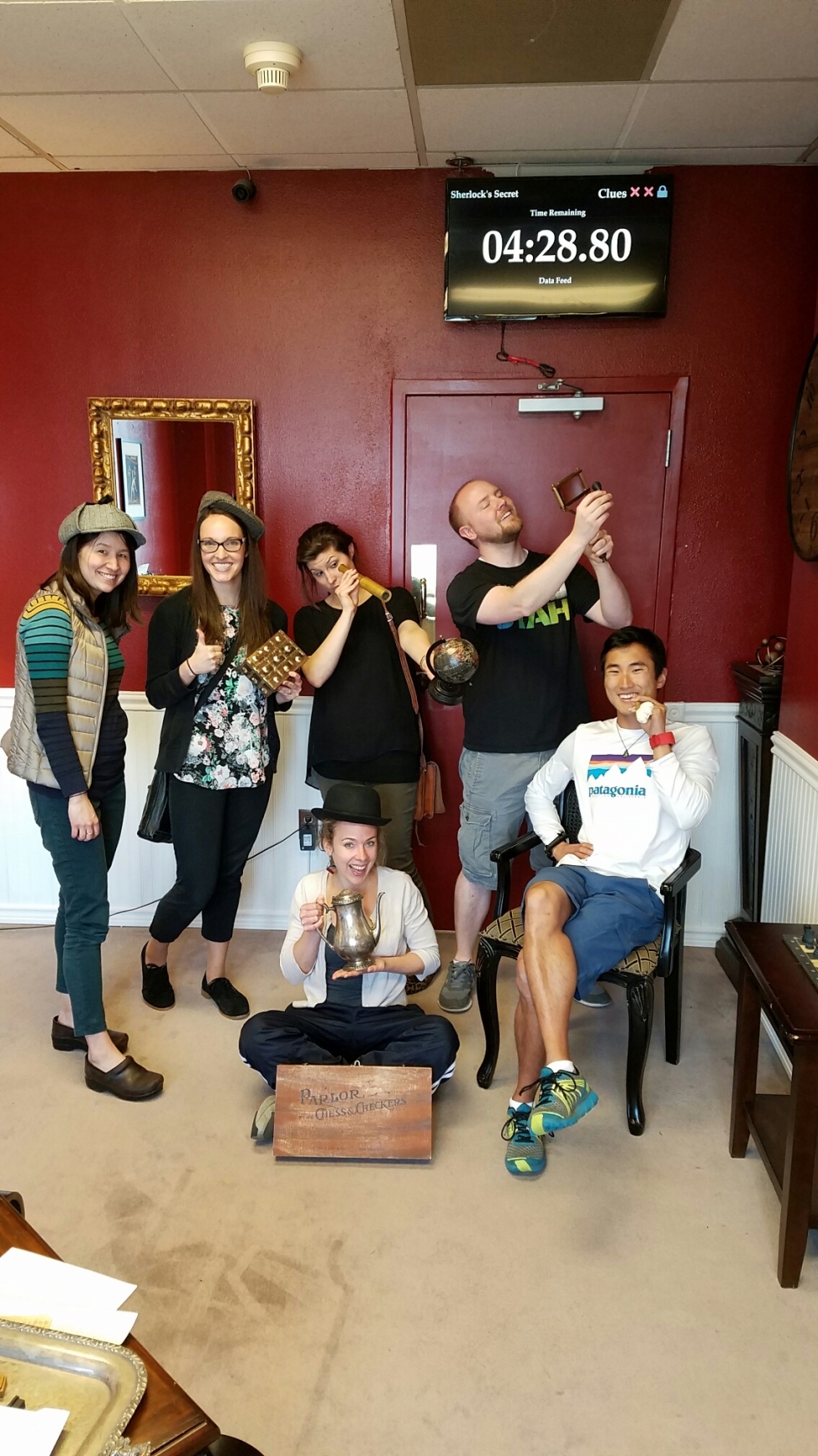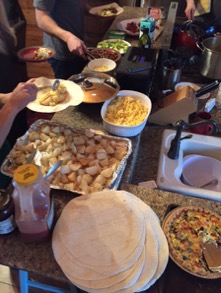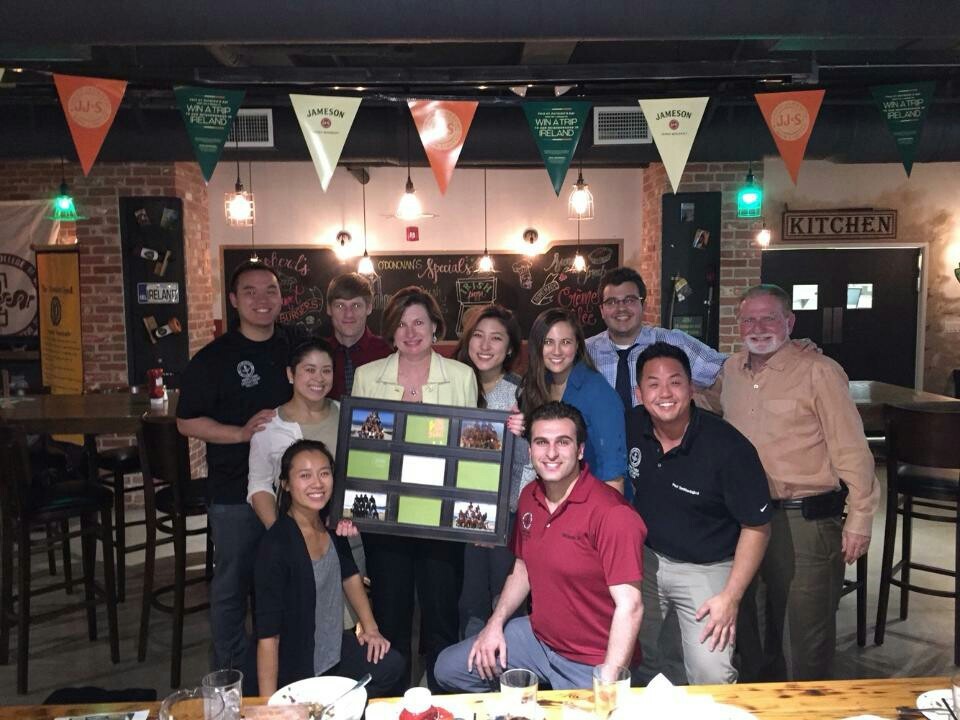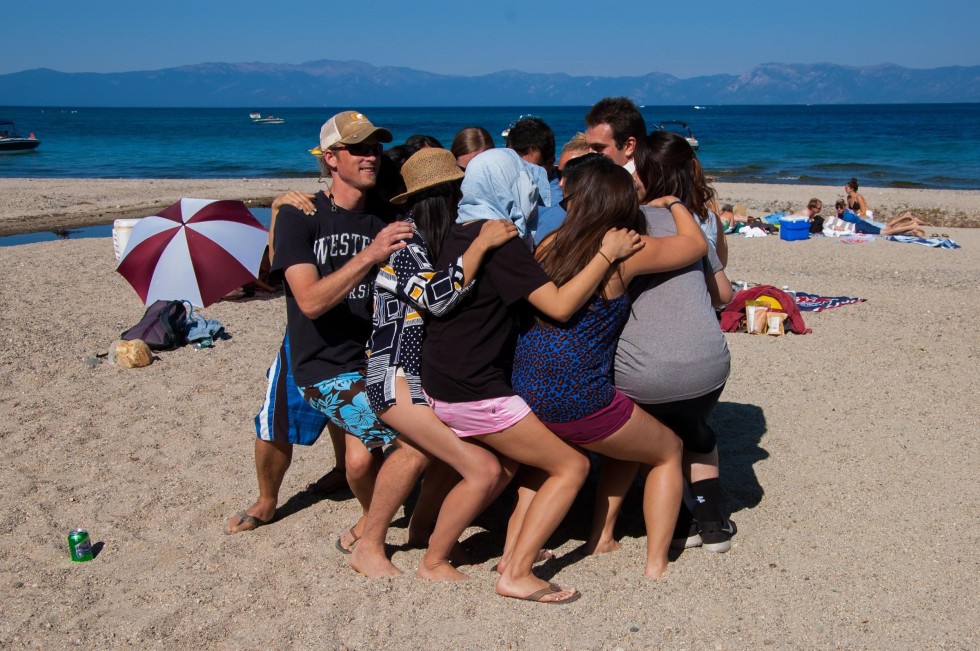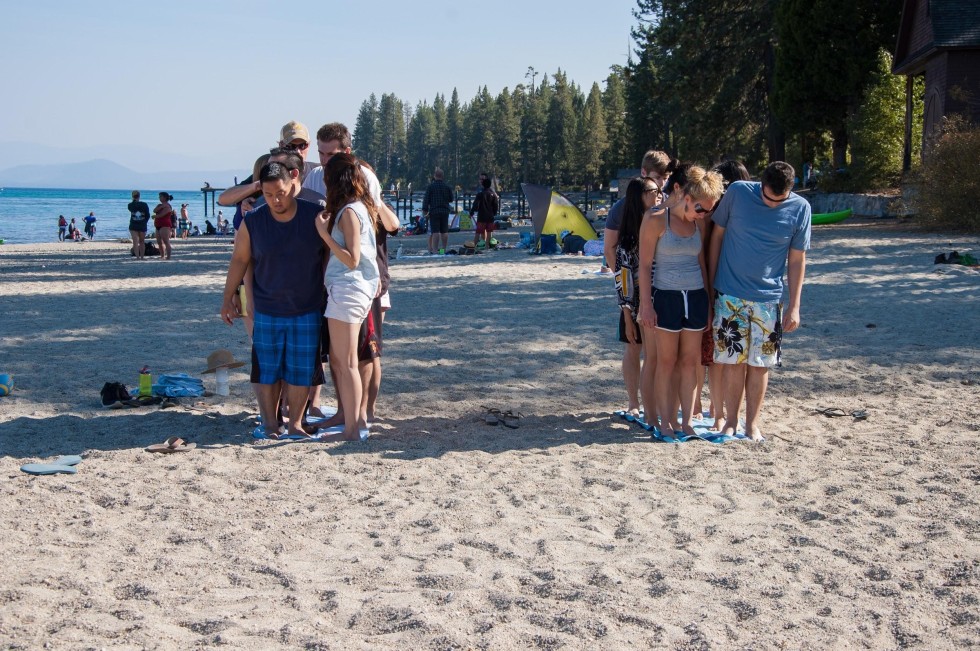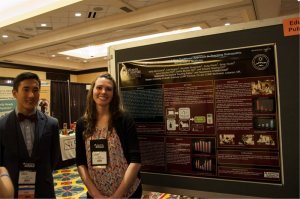It was 11pm and we still had not heard from our Pomona counterparts. The once small flakes of snow had now accumulated into a blanket covering the entirety of our driveway.
“Any cell service, yet?” we asked each other. We glanced at the top of our phones, hoping to see the familiar letters “LTE”. However, in their place we were left with only the anxiety-producing words: “No Service”. Occasionally, we would step into areas of 3G – only to find out that a car crash took down a nearby pole, knocking out internet connection in nearly all of Lake Tahoe.
“Well, I guess we can head to bed… I hope they packed chains”.
Sometime between 5 and 6am, we woke up to the sound of tired shuffling. The Pomona fellows had arrived – after a grueling 12-hour journey through the night – only to get stuck in the snow and ice covered driveway of our rental house.
After a few failed attempts at re-placing the tire chains, the 15-passenger van was finally parked and emptied. Its exhausted cargo collapsed in whatever rooms, couches, or floor space was immediately available.
Clearly it was going to be an interesting retreat.
After another hour or so of rest, the Lebanon fellows decided we would make the most of the sunny morning while the Pomona fellows slept off their stressful night. Fortunately, with the help of Izzy Pines & her gracious mother, we were able to get discounted lift tickets at Heavenly Resorts. The fresh powder and blue skies were greatly appreciated after our grey and stormy winter in Oregon. Lee and Nicole rented skis, while Maranda, Alyssa, and Mara tried their hand at snowboarding. All-in-all: successful day on the slopes.

DCIM103GOPROG0384809.
When we arrived back at the house, the Pomonans were in full-swing game mode. Tabletops were covered by the likes of Settlers, Otrio, and other strategic masterpieces. Dinner was soon underway, with the 3rd year fellows teaming up to create a delicious dinner consisting of fajitas, tacos, and rice desert.
After cleaning up, we began a few more get-to-know-you games. It was not long until new faces seemed like familiar family as we laughed and played into the late hours of the night.
On Sunday, we were awoken to the scents of a culinary masterpiece cooking in the kitchen. Mounds of meat, towers of fruit, and sizzling taters, greeted our eyes as we looked around the table. Thanks to some Souv Vide cooking, courtesy of Paul, our taste buds were not disappointed.
After venturing into Tahoe for a small walk near the lake, the most important part of the trip was underway – THE PYRAMID! After multiple diagrams, a few failed attempts, and some motivating speeches by Adam, we completed a full-on 5-level pyramid! Quite a success.

DCIM104GOPROG0445949.

DCIM104GOPROG0445950.

DCIM104GOPROG0456247.
Unfortunately, the blue skies had once again changed to an ominous grey, and snow fell with increasingly heavy force. After checking the weather report, we realized a leisurely departure on Monday would not be possible. With safety at the forefront of everyone’s mind, it was decided that some would leave Sunday night, with the rest taking off early Monday morning.

DCIM105GOPROG0586391.
Fortunately, all made it out safe-and-sound. A few stops for chain maintenance was necessary, but we made it out before another blizzard hit the following night.

DCIM105GOPROG0516341.
Even with all of the snow, itinerary changes, and internet headaches, this retreat showed us again how beneficial meetings like this are. It can be difficult working from two different campuses, a thousand miles apart. But during this weekend, we learned to connect, trust each other, and recognize our common goals. The Tahoe Retreat is an extremely invaluable experience for all of us. We start as two separate families, and leave as one cohesive unit.

DCIM105GOPROG0496338.
Thank you to Dean Crone, WesternU, and the NMM/OMM Faculty for your support of this mission and trip. The connections we build will last far longer than the cold fingers and toes at 5 in the morning. And we now know how much easier it is to drape chains over a wheel than try and drive over them
-Lee Kenyon
On behalf of the Lebanon & Pomona Fellows, Spring 2017






